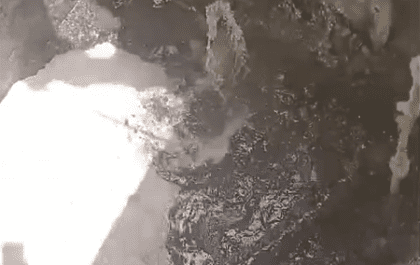It would be difficult to avoid a mention Of AI or “Artificial Intelligence” as we are inundated by articles in newspapers and on electronic media. However, there is some lack of understanding about the topic which I will attempt to address in this article. Let me try to explain what AI is and is not, and how it might shape our world in the foreseeable future.
AI is not a recent phenomenon. The term was first coined in 1956 by John McCarthy, a computer scientist at Stanford University. He defined it as “the science and engineering of making intelligent machines.” Also, Alan Turing is credited with establishing a criterion or test, known as the “Turing Test” wherein he postulated that that if a machine can engage in a conversation with a human without being detected as a machine, it has demonstrated human intelligence.
The development of devices like Alexa and software such as ChatGPT are probably a result of researchers trying to meet the criteria for the Turing test. Very simply, AI uses pattern recognition for its execution. AI based programs look for patterns in consumer behaviour, in speech, in text, in photographs, in medical diagnostic scans, etc. The software is “trained” to recognize patterns using a very large database of words, pictures, numbers, and scans. For example, if a customer tends to purchase certain products from a retail outlet on a regular basis, AI will be able to detect this purchasing pattern and the customer can be sent customize mailings/ads that match his/her preferences.
The accuracy, or correctness of the answers developed by AI is dependent on the data used to train it. Training is done by feeding a large amount of data into the software, then letting the software answer the question that is being asked. By providing human feedback regarding the accuracy of the answer, the software gets “trained” so that it can improve its ability to decipher the pattern on its next attempt.
There is ample evidence of AI making mistakes due to gaps and shortcomings in the data used in the training. These mistakes have occurred in facial recognition in the US where the program has incorrectly identified an individual as a suspect in a crime not committed by him/her. There are several examples of AI programs showing clear bias based on race, gender, age, etc. when the database used to train the software has been deficient or biased. There have been several instances of programs, such as ChatGPT, giving meaningless answers, a phenomenon that cannot be explained even by the those who have written the programs. Despite its shortcomings, AI has useful applications providing help to humans in areas where repetitive and mundane tasks can, and should be, automated. A good example of this is the use of auto pilot in airplanes. The longest, and the most boring part of flying an aircraft is when it is flying at its cruising altitude. It is the take-off and landing that requires the expertise of a human pilot. Therefore, a plane can be put on auto pilot at cruising altitude as constant attention by the pilot is not needed. But we do not eliminate the pilot. We let the auto pilot relieve the stress in a long-haul flight. The pilot can override the auto pilot if the situation demands it.
Another example is the use of autonomous, or self-driving buses in Seoul Korea. These are used at very late hours, such as midnight, when it is difficult to get drivers to stay awake on the road. The buses are driven by AI powered software, but also have a driver who can step in and override the controls, if necessary.
Some of the other examples are in reading medical scans. AI supported programs can provide useful inputs to a radiologist in detecting tumors which might be missed by the human eye. Used under the supervision of a trained radiologist, these programs can relieve the time and stress of medical professionals and help improve medical diagnoses.
There are several human jobs that are ripe for automation. One of the most denigrating and dangerous jobs in India is that of manual scavenging. Would an AI powered solution not be a great way to eliminate the risk of death that manual scavengers face today. There can be many other such jobs which should not be done by humans. The rule that Japanese companies, such as Toyota, use is if a task is dirty, difficult, or dangerous, it is a good candidate for automation. To this list we can also add boring and repetitive, with no value added.
In conclusion, I feel that both the hype and the fear attributed to AI is overdone. If the test of AI is that it should be able to mimic a human, we need to remember that humans can make mistakes and computers cannot. At the same time humans can find an opportunity in failure or mistake, such as the discovery of penicillin. A computer cannot do that because it has to be told what to look for. Ultimately, humans decide what AI should be used for, not the other way around. Let us do this judiciously.
Popular Stories
How To Revive Your Rainwater Harvesting System
The Water Couple’s Journey: From Cleaning Tanks to Complete Water Solutions!
Locals Felling Trees Near Sec A Pkt C
Winning Has Become a Habit for Divya
Is Green Park Heading Towards A Slum
Haphazard Parking, Narrow Walking Space In M Block Market
Recent Stories from Nearby
- ‘संवाद के माध्यम से तो हम परस्पर संवाद कर ही सकते हैं’ April 1, 2025
- Basant Panchami Celebrations Bring Festive Cheer to the Sector April 1, 2025
- Spring Spectacle! April 1, 2025
- Ladies Of The Sector Make The Perfect Eight April 1, 2025
- Spotted! April 1, 2025






